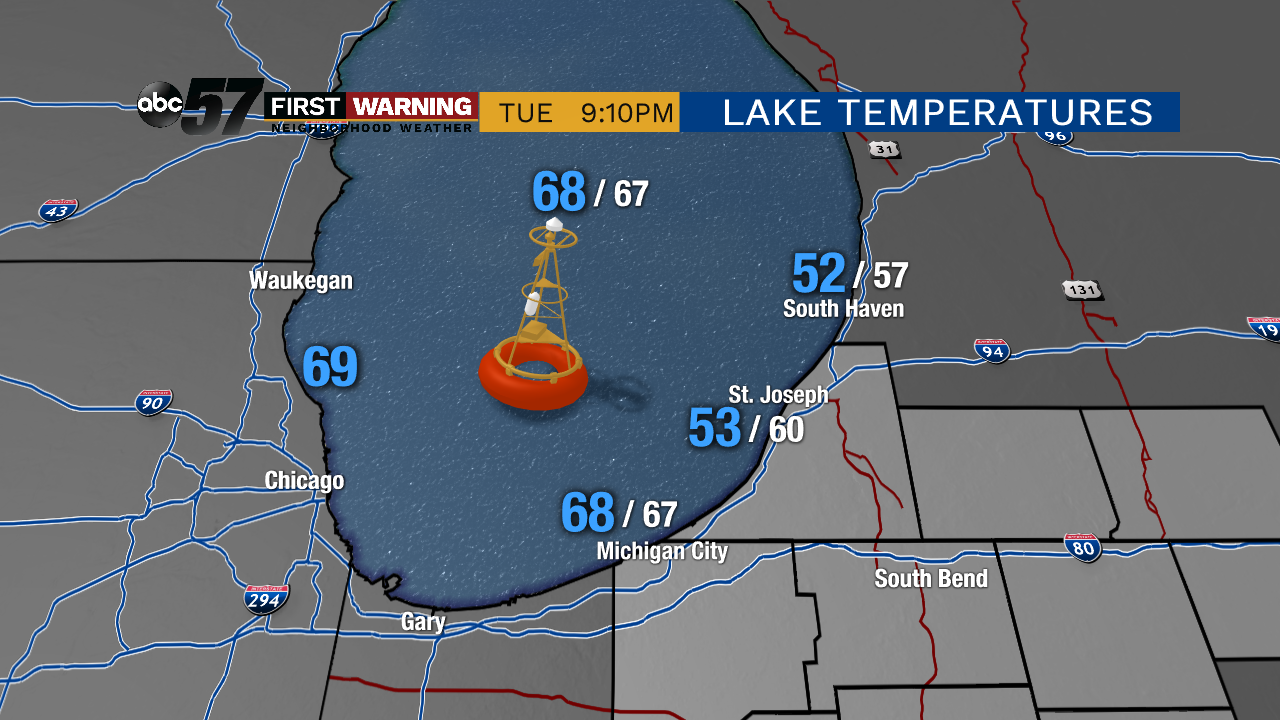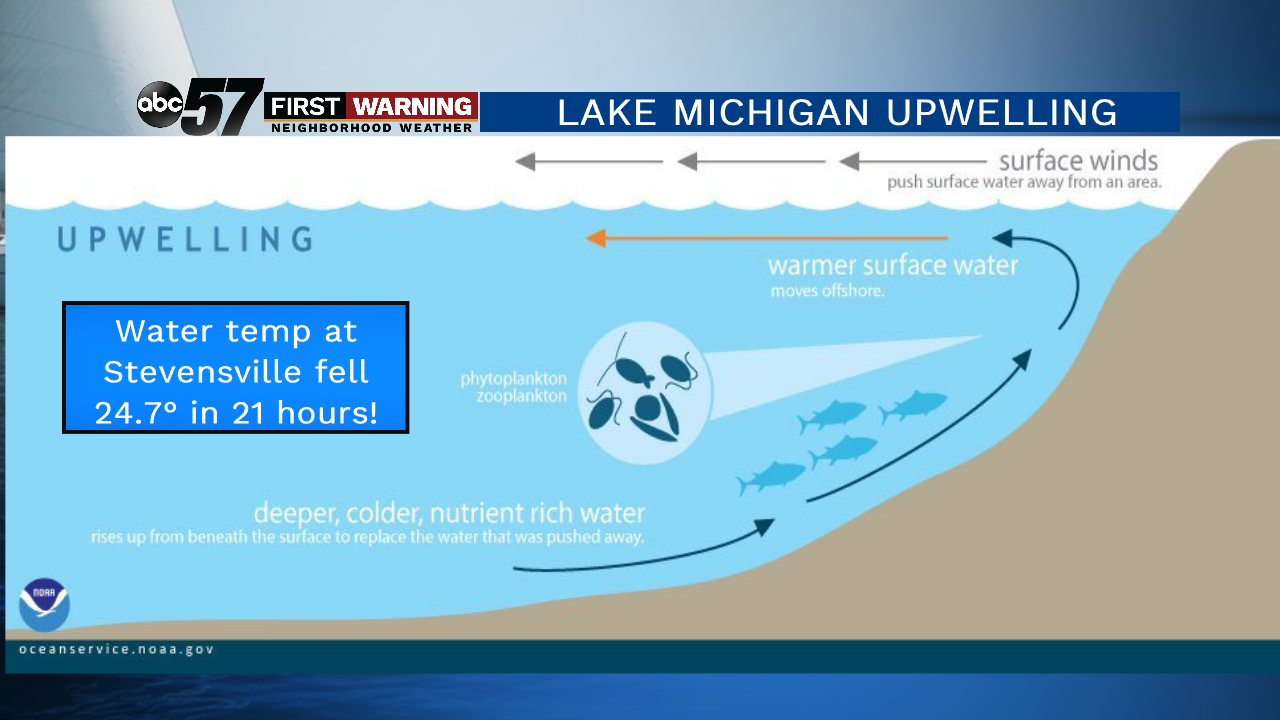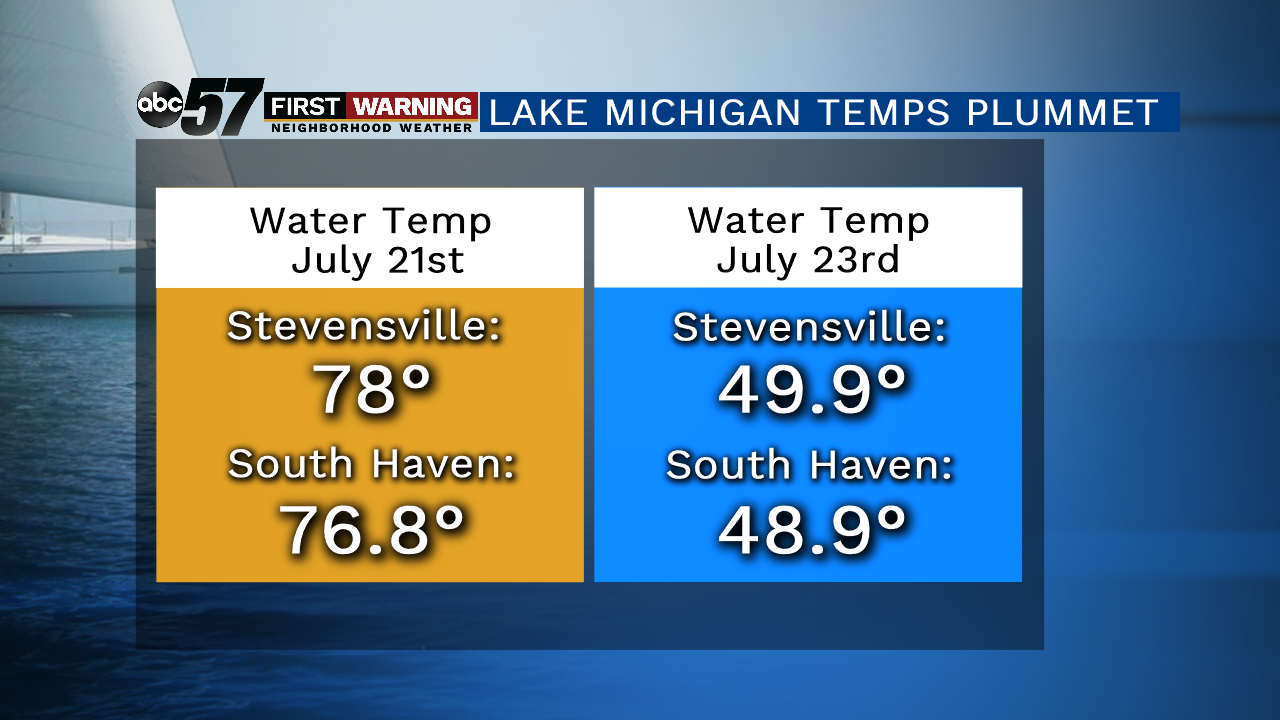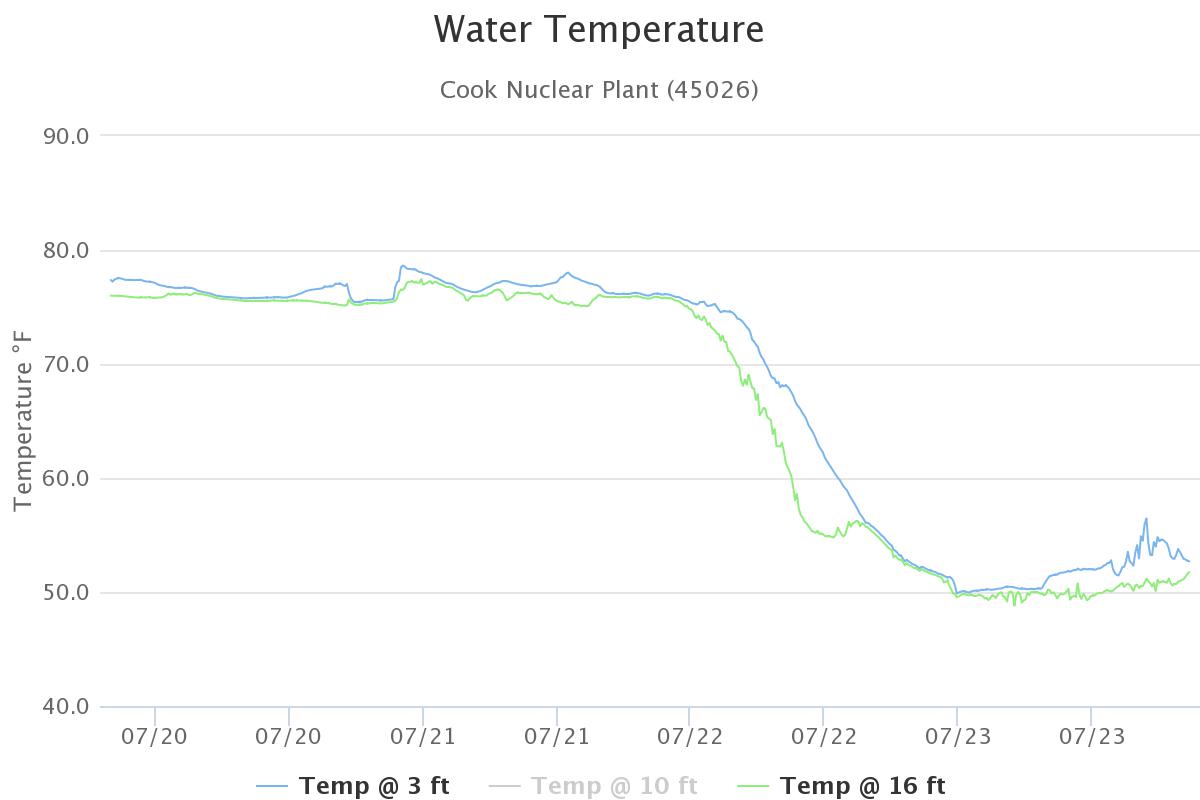Lake Michigan water temps plummet to dangerously cold levels
Monday's large waves didn't only make for dangerous swimming conditions in Lake Michigan. They also caused the water temperatures along Michigan's western shore to drop significantly.
The water temps from New Buffalo to South Haven to Grand Haven got so cold that hypothermia and cold shock could occur in a matter of minutes.But why did the lake get so cold after being warm over the weekend?
Well, thanks to Monday's large waves and strong northerly winds, a process called "upwelling" was able to occur. Essentially, the warm lake water at the surface was pushed away from the shore, allowing the much colder water beneath the surface to replace it. In fact, water temperatures at the buoys off the coast of Stevensville, South Haven and Grand Haven all plummeted into the 40s by Tuesday morning. Each location had water temps well into the 70s just over a day prior.That kind of cold is extremely dangerous and can become life-threatening in a short duration of time.
According to the Great Lakes Observing System website, the water temperature off the coast of Stevensville dropped nearly 25° in less than 24 hours!At 3 a.m. Monday morning, the lake temperature was a comfortable 75.4°. By 11:50 p.m. Monday evening, the water was down to a shivering 49.9°!
Not every beach was affected equally either. For example, the water temperature in Michigan City bottomed out at 61° early Tuesday morning before rising back to 68° by the evening.
So if you want to venture to Lake Michigan for a swim, it may be a good idea to wait until the weekend so lake temperatures can recover enough to make it tolerable!





